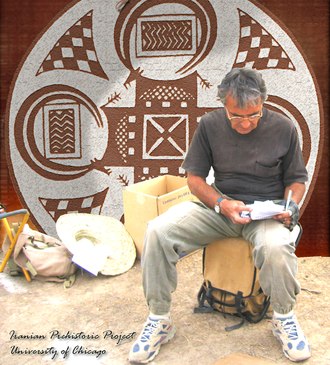Abbas Alizadeh

Abbas Alizadeh received his B.A. in art and archaeology of ancient Iran from the Department of Archaeology of Tehran University in 1975, and his M.A. in 1982 from the Department of Near Eastern Languages and Civilizations of the University of Chicago. In 1988 he received his Ph.D. with high honors from the same department. The title of his doctoral thesis is “Mobile Pastoralism and the Development of Complex societies in Highland Iran.” In the following year, his thesis won the Best Dissertation Award from the Center for Iranian Studies. In 2012 his 2006 book The Origins of State Organizations in Prehistoric Highland Fars won the
From 1988 to 1991 he was Associate Curator and Research Associate and Instructor at Harvard’s University Semitic Museum. He returned to the University of Chicago in 1991 as Senior Research Associate and Director of Iranian Prehistoric Project to conduct research and teach various courses on Iranian archaeology.
Alizadeh’s fieldwork includes various surveys and excavations in North Africa, Jordan and Anatolia. Alizadeh’s focus is Iran where he has conducted archaeological surveys in Fars and Khuzestan as well as excavations at Tall-e Bakun A and B, Tall-e Jari a and B, and Tall-e Mushki in Fars, and Chogha Bonut, Chogha Mish, Dar Khazineh, Chogha Do Sar, Tappeh Beladieh, and Abu Fanduweh in Khuzestan. Since his excavations at Chogha Bonut in 1996, his methods of collecting fauna and flora through floatation has been adopted widely by the young generation of Iranian archaeologists, as well as the use of Harris Matrix to simplify the visualization of archaeological stratigraphy.
Alizadeh was the first Iranian archaeologist to formulate an alternative model for the development of early state organizations in south and southwestern Iran. In this model, Alizadeh considers the role of ancient nomads of southwestern Iran and their interactions with the settled farmers as key factors in the formation of the early state in the region. Spurred by his model, a large number of Iranian archaeologists conducted field research that focused on finding archaeological evidence of the existence of ancient nomads in both highlands and lowlands of western and southwestern Iran.
From 2000-2001, Alizadeh established the Pottery Bank at the National Museum in Tehran, Iran, using large unpublished collections of sherds from archaeological surveys and excavations for all the regions in Iran. This Pottery Bank has been developed into a major research and education center for Iranian archaeologists and students.
In 2015, Alizadeh was again invited to the National Museum of Iran to rescue, study and classify large unpublished collections of archaeological objects and pottery sherds from hundreds of excavations in Iran that had been stored in the warehouses of the Museum since 1940s. This year-long project also culminated in the establishment of another research center at the Iran National museum.
From 2013-2014 Alizadeh was invited by the Susa Archaeological Base at the French Chateau at Susa, Khuzestan, to rescue, classify and organize huge archaeological collections in the Chateau’s immense storerooms that had been deposited by the French archaeologists since 1930s. Those archaeological collections are now available for researches at the newly established Susa Archaeological Research Center, at Susa.
Alizadeh has written 9 books and numerous articles in both Persian and English. He is also the author of the only Persian language book in Iran on methods and theory in archaeology. Most of his publications focus on the ancient nomads and their role in the emergence of social complexity.
